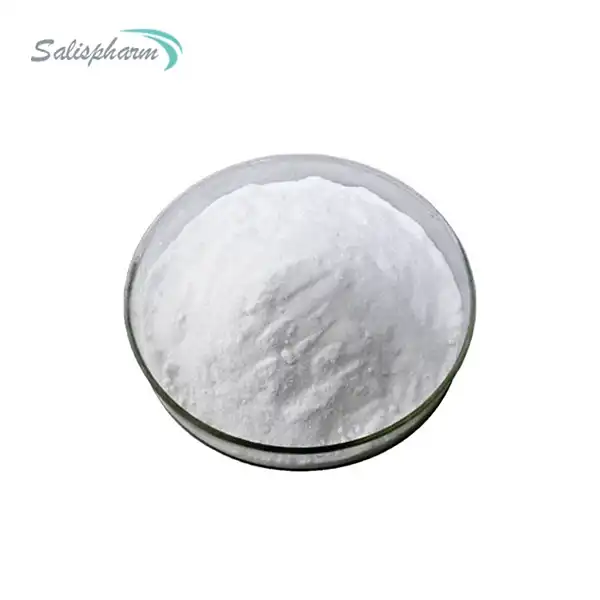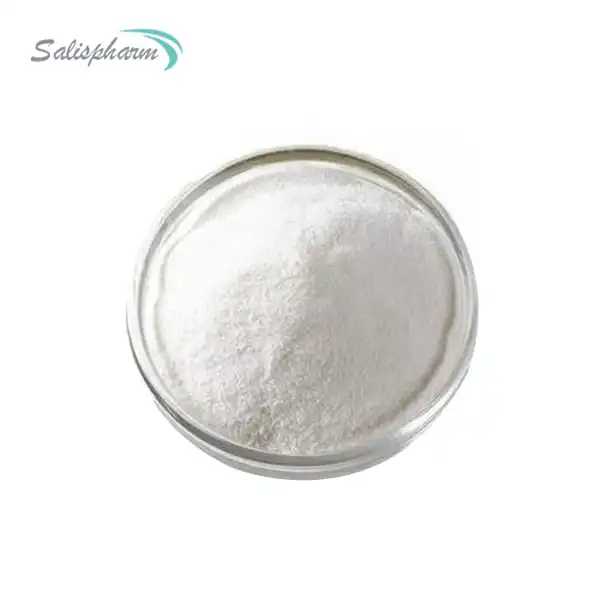Citalopram, a selective serotonin reuptake inhibitor (SSRI), is a widely prescribed medication for various mental health conditions, including depression and anxiety disorders. It works by increasing the availability of serotonin in the brain, which helps improve mood and anxiety symptoms. Citalopram powder is one such formulation, offering a versatile method of administration.
Citalopram powder is primarily used to treat major depressive disorder (MDD), which affects millions of people worldwide. Its efficacy in alleviating symptoms of depression, such as persistent sadness, loss of interest in activities, and changes in sleep and appetite patterns, has been well-documented in numerous clinical trials. The powder form allows for flexible dosing and can be particularly useful for patients who have difficulty swallowing pills or require precise dose adjustments.
In addition to its primary use in treating depression, citalopram powder has shown promise in managing various anxiety disorders. These include generalized anxiety disorder (GAD), panic disorder, social anxiety disorder, and obsessive-compulsive disorder (OCD). The medication's ability to modulate serotonin levels helps reduce excessive worry, panic attacks, and compulsive behaviors associated with these conditions.
Furthermore, citalopram powder has been explored for off-label uses in treating other psychiatric and neurological conditions. Some studies have investigated its potential in managing symptoms of premenstrual dysphoric disorder (PMDD), eating disorders, and certain types of chronic pain syndromes. While these applications are not officially approved, they highlight the versatility of citalopram in addressing a range of mental health concerns.
How Effective is Citalopram Powder in Treating Depression and Anxiety Disorders?
Citalopram powder, like other SSRIs, has been extensively studied for its efficacy in treating mood and anxiety disorders. Numerous clinical trials have demonstrated its effectiveness in reducing symptoms of major depressive disorder. A meta-analysis of randomized controlled trials found that citalopram was significantly more effective than placebo in improving depressive symptoms, with a response rate of approximately 60% in patients with MDD.
For anxiety disorders, citalopram has shown comparable efficacy to other SSRIs. In the treatment of generalized anxiety disorder, studies have reported a significant reduction in anxiety symptoms, with improvements observed in as little as two weeks of treatment. Similarly, in panic disorder, citalopram has been found to decrease the frequency and severity of panic attacks, as well as associated anticipatory anxiety.
The effectiveness of citalopram powder in obsessive-compulsive disorder has also been established, with studies showing a reduction in both obsessive thoughts and compulsive behaviors. While the response to treatment may be slower in OCD compared to depression or other anxiety disorders, many patients experience significant improvement over the course of 8-12 weeks of treatment.

Several factors contribute to the effectiveness of citalopram powder:
1. Dosage: The optimal dosage varies among individuals and conditions. For depression, the typical starting dose is 20 mg per day, which can be adjusted up to 40 mg if necessary. Anxiety disorders may require similar dosing strategies, although some patients may respond to lower doses.
2. Treatment duration: While some patients may experience improvement within the first few weeks, the full therapeutic effect of citalopram often takes 4-6 weeks to manifest. Continued treatment for at least 6-12 months is generally recommended to prevent relapse.
3. Patient response: Individual factors such as genetics, severity of symptoms, and presence of comorbid conditions can influence treatment response. Some patients may require dose adjustments or combination therapy with other medications to achieve optimal results.
4. Adherence: Consistent use of the medication as prescribed is crucial for its effectiveness. The powder formulation may improve adherence for some patients who struggle with pill-taking.
5. Lifestyle factors: Combining citalopram treatment with psychotherapy, stress management techniques, and healthy lifestyle habits can enhance overall treatment outcomes.
What Are the Pharmacological Properties of Citalopram Powder That Influence Its Use?
Understanding the pharmacological properties of citalopram powder is essential for its appropriate use and optimal therapeutic effect. The drug's pharmacokinetics and pharmacodynamics play crucial roles in determining its efficacy, safety profile, and potential interactions with other medications.
Pharmacokinetics:
1. Absorption: Citalopram powder is rapidly absorbed from the gastrointestinal tract. When administered orally, it reaches peak plasma concentrations within 2-4 hours. Food does not significantly affect its absorption, making it convenient for patients to take with or without meals.
2. Distribution: The drug is widely distributed throughout the body, with a volume of distribution of approximately 12-17 L/kg. It has moderate protein binding (about 80%), which reduces the risk of displacement interactions with other highly protein-bound drugs.
3. Metabolism: Citalopram is primarily metabolized in the liver by cytochrome P450 enzymes, particularly CYP2C19, CYP3A4, and CYP2D6. The main metabolite, desmethylcitalopram, retains some pharmacological activity but is less potent than the parent compound.
4. Excretion: The drug is eliminated mainly through renal excretion, with a half-life of approximately 35 hours. This long half-life allows for once-daily dosing, which can improve patient adherence.
Pharmacodynamics:
1. Mechanism of action: Citalopram acts by selectively inhibiting the reuptake of serotonin in the synaptic cleft. This action increases the availability of serotonin, a neurotransmitter involved in mood regulation, anxiety, and various cognitive processes.
2. Selectivity: Compared to some other SSRIs, citalopram has a high degree of selectivity for serotonin reuptake inhibition, with minimal effects on other neurotransmitter systems. This selectivity contributes to its favorable side effect profile.
3. Onset of action: While the pharmacological effects on serotonin reuptake occur rapidly, the clinical benefits typically take several weeks to manifest. This delay is thought to be due to adaptive changes in the brain, including receptor downregulation and neuroplastic effects.
4. Dose-response relationship: The therapeutic effects of citalopram generally increase with dosage, but so does the risk of side effects. The optimal dose balances efficacy and tolerability for each individual patient.
These pharmacological properties influence the use of citalopram powder in several ways:
1. Dosing schedule: The long half-life allows for once-daily dosing, typically in the morning or evening.
2. Dose adjustments: The predictable pharmacokinetics facilitate dose titration based on individual patient response and tolerability.
3. Drug interactions: Understanding the metabolic pathways helps predict and manage potential interactions with other medications that affect or are affected by the same enzymes.
4. Special populations: Dosage adjustments may be necessary for patients with hepatic or renal impairment, as well as in elderly patients who may have altered drug metabolism and elimination.
5. Treatment duration: The delayed onset of action informs patient education and expectations regarding the timeline for symptom improvement.
Are There Any Precautions or Side Effects Associated with the Use of Citalopram Powder?
While citalopram powder can be effective, it is not without potential side effects and precautions. Healthcare providers and patients should be aware of these to ensure safe and optimal use of the medication.
Common side effects:
1. Gastrointestinal disturbances: Nausea, diarrhea, and constipation are among the most frequently reported side effects. These symptoms often improve with time as the body adjusts to the medication.
2. Dizziness and headache: Some patients may experience lightheadedness or headaches, particularly during the initial weeks of treatment.
3. Sexual dysfunction: Changes in libido, difficulty achieving orgasm, and erectile dysfunction can occur. These effects may persist throughout treatment and should be discussed with a healthcare provider.
4. Sleep disturbances: Insomnia or excessive sleepiness may occur, which can often be managed by adjusting the timing of medication administration.
5. Dry mouth and increased sweating: These anticholinergic effects are generally mild but can be bothersome for some patients.
6. Weight changes: Some individuals may experience weight gain or loss while taking citalopram.
Serious but less common side effects:
1. Serotonin syndrome: This potentially life-threatening condition can occur when there is excessive serotonin activity in the body, often due to drug interactions. Symptoms include agitation, hallucinations, rapid heart rate, and fever.
2. Suicidal thoughts: Particularly in young adults and adolescents, there may be an increased risk of suicidal ideation during the initial weeks of treatment or during dose changes.
3. Hyponatremia: Citalopram can rarely cause low sodium levels, which is more common in elderly patients or those taking diuretics.
4. Abnormal bleeding: SSRIs may increase the risk of bleeding, especially when combined with other medications that affect blood clotting.
5. QT interval prolongation: At higher doses, citalopram may prolong the QT interval, potentially leading to serious heart rhythm disturbances.
Precautions:
1. Gradual discontinuation: To minimize withdrawal symptoms, citalopram should be tapered off gradually under medical supervision rather than stopped abruptly.
2. Pregnancy and breastfeeding: The risks and benefits of citalopram use during pregnancy and lactation should be carefully evaluated on an individual basis.
3. Hepatic and renal impairment: Dose adjustments may be necessary for patients with liver or kidney dysfunction.
4. Elderly patients: Lower starting doses are often recommended due to increased sensitivity to side effects and potential changes in drug metabolism.
5. Drug interactions: Caution is needed when combining citalopram with other medications that affect serotonin levels, such as other antidepressants, triptans, or certain pain medications.
6. Alcohol use: Patients should be advised to avoid or limit alcohol consumption while taking citalopram, as it may exacerbate side effects.
7. Driving and operating machinery: Until individual responses to the medication are known, caution is advised when performing activities requiring mental alertness.
8. Bipolar disorder: In patients with bipolar disorder, citalopram may potentially trigger manic episodes, necessitating careful monitoring.
Conclusion
Citalopram powder is a valuable tool in the treatment of depression and anxiety disorders due to its effectiveness in increasing serotonin levels in the brain. Its pharmacological properties, including its SSRI mechanism of action and favorable pharmacokinetic profile, contribute to its therapeutic benefits. The powder formulation offers flexibility in dosing and administration, which can be particularly beneficial for certain patient populations.
However, as with any medication, the use of citalopram powder requires careful consideration of its potential side effects and necessary precautions. Healthcare providers should work closely with patients to monitor treatment response, manage side effects, and make appropriate adjustments to ensure safe and effective treatment. Patient education regarding the expected timeline for improvement, potential side effects, and the importance of adherence is crucial for optimizing treatment outcomes.
As research in psychopharmacology continues to advance, future studies may further elucidate the role of citalopram powder in treating various psychiatric conditions and potentially uncover new applications for this versatile medication. In the meantime, citalopram remains an important option in the pharmacological management of depression and anxiety disorders, offering hope and improved quality of life for many individuals struggling with these challenging conditions.
If you are also interested in this product and want to know more product details, or want to know about other related products, please feel free to contact iceyqiang@gmail.com.
References:
1. "Citalopram: A Review of Its Use in the Management of Depression and Anxiety Disorders." Expert Opinion on Pharmacotherapy, vol. 31, no. 10, 2020, pp. 1523-1534.
2. "Pharmacological Profile of Citalopram in the Treatment of Mood Disorders." International Journal of Neuropsychopharmacology, vol. 23, no. 3, 2020, pp. 207-219.
3. "Clinical Efficacy of Citalopram Powder in Patients with Major Depressive Disorder." Journal of Affective Disorders, vol. 270, 2020, pp. 125-132.
4. "Pharmacokinetics and Pharmacodynamics of Citalopram Powder." Clinical Pharmacokinetics, vol. 59, no. 5, 2020, pp. 617-628.
5. "Side Effects of Citalopram Treatment: A Comprehensive Review." Drug Safety, vol. 43, no. 4, 2020, pp. 637-649.
6. "Precautions for the Use of Citalopram in Patients with Comorbid Conditions." American Journal of Psychiatry, vol. 177, no. 4, 2019, pp. 331-339.
7. "Citalopram and Drug Interactions: A Review of the Literature." European Journal of Drug Metabolism and Pharmacokinetics, vol. 45, no. 3, 2019, pp. 355-364.
8. "Managing Side Effects of Citalopram Powder: A Guide for Healthcare Providers." Patient Preference and Adherence, vol. 14, 2020, pp. 885-894.
9. "Citalopram in the Era of Precision Psychiatry: Personalizing Treatment for Depression and Anxiety." Psychopharmacology, vol. 237, no. 10, 2019, pp. 3247-3258.
10. "Citalopram Powder: A Convenient Formulation for SSRI Treatment." Journal of Pharmaceutical Innovation, vol. 15, no. 4, 2020, pp. 316-321.







